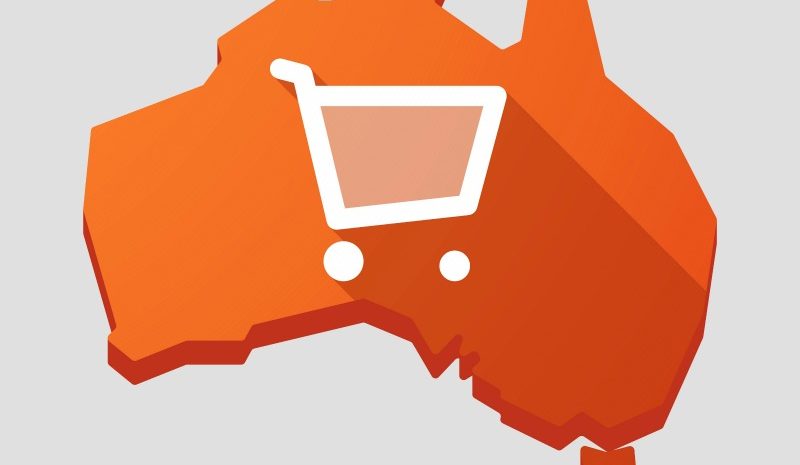Aussies among the world’s biggest cross-border shoppers

Online shoppers from Singapore, Australia and Hong Kong are more likely than those from any other country to buy offshore.
According to international research into cross-border e-commerce conducted by Pitney Bowes, a global online technology company, 94 per cent of consumers shop online domestically – and two thirds of them have made purchases from offshore retailers.
Singapore (89 per cent), Australia (86 per cent) and Hong Kong (85 per cent) have the highest number of cross-border shoppers, while countries like Japan (34 per cent) and the US (45 per cent) are still growing in cross-border confidence.
The Global Online Shopping Survey found that one-third of the world’s connected online consumers make purchases online daily or weekly – in China that proportion is two-thirds. However most shoppers (58 per cent) buy online offshore only monthly or annually.
The top countries for monthly or annual cross-border shopping include Australia (78 per cent), Singapore (77 per cent), Canada (72 per cent), Mexico (71 per cent) and Hong Kong (70 per cent).
“What also drives cross-border shopping is the mutually-beneficial union between physical stores and online shopping, which could provide a huge opportunity for retailers and brands,” says the survey.
Findings uncovered that 63 per cent of consumers that have shopped cross-border are now participating in what Pitney Bowes is describing as “In-store Global. Online Local.” This phenomenon is when consumers make in-store purchases during their international travels, and follow up with online purchases from that same cross-border retailer. Most cross-border shoppers in South Korea, China and India cited that they often or always revisit a retailer online following international travels.
Marketplaces command power
Approximately half of consumers say that all or most of their online shopping, whether domestic or cross-border, is through an online marketplace. The top countries in which shoppers choose all or most of their cross-border marketplace purchases are Japan (70 per cent), China (61 per cent), Germany (59 per cent) and India (55 per cent). About a quarter of global shoppers choose the retailer’s direct site for all or most of their cross-border shopping. The top direct-to-retail countries are Canada (35 per cent), South Korea (34 per cent) and Australia (33 per cent).
“The remaining shoppers shop both marketplaces and retailers with no leading preference. This suggests that retailers should consider a broad presence and multiple channels to reach global shoppers.”
“Consumers across the world have spoken,” Lila Snyder, president of global e-commerce at Pitney Bowes, said. “We have moved beyond the days of marketplace or retailer; in-store or online; or even in-country or cross-border.
“The world is shopping – everywhere – as new consumer behaviors and trends have emerged. Entering the holiday season and a new year, retailers and marketplaces alike should take note and capitalize on these shifts in consumer behavior, which open up new opportunities for brands and retailers at home and abroad.”
Shopping by smartphone
About half of shoppers in Singapore (51 per cent), India (50 per cent), Mexico (49 per cent) and China (47 per cent) are most likely to use a mobile device (including tablets and phones) for browsing. When it comes to order tracking, over half of shoppers in China, Hong Kong, India, Singapore and South Korea use these devices. Even though mobile is not the first choice for completing a purchase (33 per cent), surveyed shoppers often use their mobile device for part of the shopping journey. For example, in the US one-third of shoppers (33 per cent) use mobile for completing a purchase, however mobile usage increases significantly (47 per cent) when tracking an item post purchase. The data reveals a strong tracking application as highly strategic to reaching the mobile shopper.
The survey also uncovered insight into how consumers are finding products online. While marketplaces (62 per cent), search engines (43 per cent) and retailers’ sites (39 per cent) continue to be popular discovery tools, countries like Hong Kong (26 per cent), Australia (24 per cent) and Singapore (22 per cent) rely on email communications to find new products. And now nearly one-fifth (19 per cent) of consumers are discovering new products through social media channels, especially in Hong Kong (45 per cent), Mexico (32 per cent), India and Singapore (both 30 per cent).
“In fact, Hong Kong consumers are just as likely to use social channels to discover new products as they are a retailer’s website, while consumers in Mexico are more likely to use social media than visit a retailer’s website.”
Methodology
The 2016 Pitney Bowes Global Online Shopping Study was conducted online by ORC International and surveyed approximately 13,000 adults across 13 countries regarding their perceptions, habits and preferences for making online purchases. This year’s survey polled Singapore, Hong Kong and Mexico for the first time, where they joined survey participants from Australia, Canada, China, France, Germany, India, Japan, South Korea, the United Kingdom, and the United States. The survey was conducted in August 2016.
This article first appeared on our sister site, Inside Retail Asia.
Comment Manually
You must be logged in to post a comment.

No comments